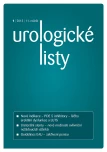-
Medical journals
- Career
Simultaneous ipsilateral native nephrectomy with kidney transplantation for the patiens with polycystic kidney disease
Authors: K. Morita; T. Hirose; H. Sasaki; M. Masayoshi; T. Tanabe; D. Iwami; K. Hotta; N. Fukuzawa; K. Nonomura
Published in: Urol List 2013; 11(1): 27-30
Overview
Prevention of perioperative complications related to an enlarged polycystic native kidney is mandatory when performing kidney transplantation for end-stage renal disease (ESRD) patients with polycystic kidney disease (PKD). The clinical course and outcome of kidney transplantation were retrospectively reviewed in ESRD patients with PKD. Eleven patients (6 males and 5 females; median age 54 years, age range 37–67 years at transplantation) were enrolled in this study. The median postoperative observation period was 35 (9–134) months. The native ipsilateral kidney was simultaneously removed with transplantation except for one case whose native kidney had been removed previously due to infection. All recipients are alive with functioning grafts. The median most recent serum creatinine level was 1.08 (0.67–3.17) mg/dl. Overall, 4 patients experienced acute rejection, 2 had viral infections, 2 had a bacterial native kidney infection (nephrectomized in 1), and 1 had ileus. Remaining kidney size was reduced in 6 patients, with no change in 4 and increased in only 1 patient who underwent native nephrectomy 11 years after transplantation. Native kidneys of PKD patients mostly reduce in size following successful kidney transplantation. Ipsilateral nephrectomy for the purpose of securing allograft space at transplantation is a safe and preferred procedure.
Key words:
complications, end-stage renal disease, kidney transplantation, native nephrectomy, polycystic kidney disease
Sources
1. Annual progress report from the Japanese renal transplant registry: Number of renal transplantation in 2010, part 2. The Japanese Society for Clinical Renal Transplantation. Ishoku 2011; 46(6): 506–523.
2. Kirkman MA, van Dellen D, Mehra S et al. Native nephrectomy for autosomal dominant polycystic kidney disease: before or after kidney transplantation? BJU Int 2011; 108(4): 590–594.
3. Charlson ME, Pompei P, Ales KL et al. A new method of classifying prognostic comorbidity in longitudinal studies: Development and validation. J Chron Dis 1987; 40(5): 373–383.
4. Dindo D, Demartines N, Clavien P. Classification of surgical complications. A new proposal with evaluation in a cohort of 6,336 patients and results of a survey. Ann Surg 2004; 240(2): 205–213.
5. Desai MR, Nandkishore SK, Ganpule A et al. Pretransplant laparoscopic nephrectomy in adult polycystic kidney disease: a single centre experience. BJU Int 2008; 101(1): 94–97.
6. Ekser B, Rigotti P. Autosomal dominant polycystic kidney disease. Images in clinical medicine. N Engl J Med 2010; 363(1): 71.
7. Cornelis F, Couzi L, Le Bras Y et al. Embolization of polycystic kidneys as an alternative to nephrectomy before renal transplantation: A pilot study. Am J Transpl 2010; 10(10): 2363–2369.
Labels
Paediatric urologist Urology
Article was published inUrological Journal

2013 Issue 1-
All articles in this issue
- The role of phosphodiesterase inhibitors in urology in treatment of erectile dysfunction
- Tadalafil in the treatment of LUTS/BPH and ED
- Management of the adult buried penis
- Varicocele and the signification of its repair
- Laparoscopis nephrectomy for atrophic kidney with serious infectious episode
- Simultaneous ipsilateral native nephrectomy with kidney transplantation for the patiens with polycystic kidney disease
- Retroperitoneal laparoscopic nephrectomy for the patients undergoing peritoneal dialysis
- Preliminary experience with transperitoneal laparoendoscopic single-site radical nephrectomy using a home-made single-port device in China
- A review of current practices and controversies in the use of indwelling ureteric stents
- Does early following PCNL lead to trapped stones in the tract: Myth or reality
- Patient preferences for advanced urological techniques: A guide to future surgical developments?
- Bipolar plasma vaporization of prostate for symptomatic large benign prostatic enlargement: two-year clinical results
- Gender as a factor influencing clinico-pathological parameters and prognosis of renal cell carcinoma
- EAU Guidelines on penile curvature
- Urological Journal
- Journal archive
- Current issue
- Online only
- About the journal
Most read in this issue- Management of the adult buried penis
- Varicocele and the signification of its repair
- EAU Guidelines on penile curvature
- A review of current practices and controversies in the use of indwelling ureteric stents
Login#ADS_BOTTOM_SCRIPTS#Forgotten passwordEnter the email address that you registered with. We will send you instructions on how to set a new password.
- Career
